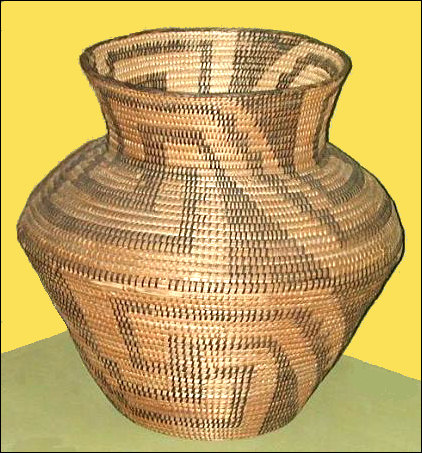

Basketry is one of the oldest human crafts to appear in the archaeological record. Evidence from the Old World seems to place its origin well back into paleolithic times, along with the invention of cordage. Undoubtedly, the earliest immigrants into the New World carried both the skill to manufacture baskets and baskets themselves.
Although lightweight, portable, and made of universally available materials, baskets had drawbacks not remedied by other inventions for some thousands of years. Difficult to render uncrushable, baskets used in travel did a poor job of protecting fragile objects, and most baskets required special treatment to be rendered waterproof. The most important limitation was the inability to be used directly on the coals of a fire for cooking. Instead, it was necessary to place stones in a fire and, when hot, transfer them to waterproofed baskets to heat liquids.
Early presence of basketry in the Southwest eventually was joined by
pottery, overcoming the major drawbacks of baskets—but introducing fragility and
weight. Thus, even to the present, baskets remain an important part of desert household
ware.

Contributor: Arthur H. Harris, Laboratory for Environmental Biology, Centennial Museum, University of Texas at El Paso.
Desert Diary is a joint production of the Centennial Museum and KTEP National Public Radio at the University of Texas at El Paso.

Papago basket. Centennial Museum collection. Photograph by A.H. Harris.